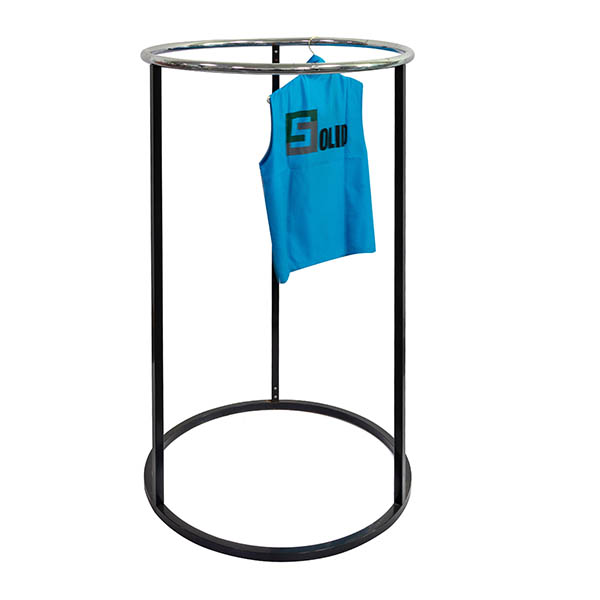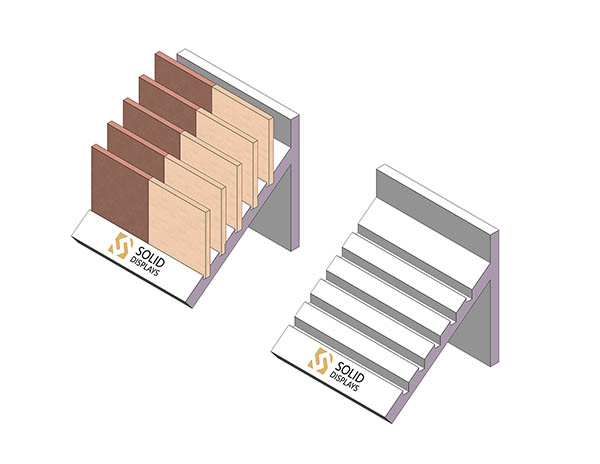Steigerung des Einzelhandelsumsatzes durch Visual Merchandising
In the bustling world of retail, where competition is fierce and attention spans are fleeting, the art of visual marketing stands as a powerful tool for brands to captivate consumers and drive sales. Visual merchandising, rooted in the captivating displays of 19th-century department store windows, has evolved into a sophisticated strategy employed by retailers and consumer goods companies alike. Let’s delve into the nuances of visual marketing, exploring its techniques, users, and the pivotal role it plays in shaping consumer behavior.
The Essentials of Visual Merchandising
Farbe: The palette of colors chosen for custom POP display or POS display stands can wield the most significant influence over consumer mood and perception. Whether it's vibrant hues to evoke excitement or soothing tones to promote relaxation, color serves as a silent communicator in visual merchandising.

Lighting: Illumination is not merely functional but serves as a means to enhance the allure of displayed products in retail environments, exhibitions, or other situations. Thoughtfully placed lighting can draw attention from customers or passers, highlight key features, and create a welcoming ambiance within retail spaces.

Message: Text and slogans strategically integrated into displays wield persuasive power over consumers, like the logo of the brand or store, promotion information, guidance information, etc. Compelling messaging can reinforce brand identity, communicate product benefits, and ultimately sway consumers purchasing decisions.
Sound: Audio elements, from catchy tunes to brand-specific jingles, contribute to the immersive retail experience. Sound has the ability to evoke emotions, reinforce brand personality, and create a memorable atmosphere for shoppers.
Smell: Fragrance holds the remarkable ability to evoke nostalgia and trigger emotional responses. Incorporating scents into visual displays can forge positive associations with brands, enhancing the overall sensory experience for consumers. This method is often used in food stores and beauty stores.
Technology: The integration of cutting-edge technologies such as LED displays and interactive touch screens elevates visual merchandising to new heights. These innovations captivate attention, engage customers, and set brands apart in a crowded marketplace.
Users of Visual Marketing
From consumer goods companies showcasing their latest products to retailers crafting immersive shopping environments, visual merchandising finds application across diverse sectors. Whether it’s groceries, apparel, electronics, or toys, brands and stores harness the power of visual marketing to entice customers and drive sales. Retailers leverage their understanding of consumer behavior and spatial dynamics to design layouts that optimize visibility and encourage product discovery.
The Significance of Visual Marketing
First Impression: With a few seconds to make a lasting impression, the visual appeal of displays holds immense importance. Stunning visuals can captivate customers from the moment they step into a store, laying the foundation for successful sales interactions.
In-store Shopping Experience: Despite the rise of e-commerce, many consumers still prefer the tactile experience of offline and in-store shopping. Visual merchandising plays a pivotal role in enhancing this experience, guiding customers to products that resonate with their preferences and creating an atmosphere that fosters exploration.
Purchasing Decisions: The artful arrangement of displayed products and persuasive messaging exert a powerful influence on consumer purchasing behavior. Visual cues strategically positioned throughout the store nudge shoppers towards unplanned purchases, driving impulse buys and increasing average transaction values.
Target Market Appeal: Solide Displays recognizing that one size does not fit all, brands tailor their visual merchandising strategies to appeal to specific demographics. By understanding their target audience and catering to their preferences, so brands and stores can effectively capture the attention of consumers with the highest purchasing potential.
In conclusion, visual marketing stands as an indispensable facet of modern retail, wielding the power to captivate, persuade, and ultimately drive sales. By harnessing the elements of color, light, messaging, and technology, brands can create immersive experiences that resonate with consumers on both conscious and subconscious levels. In an era defined by fierce competition and evolving consumer preferences, mastering the art of visual merchandising is essential for brands seeking to thrive in the retail landscape.
Verwandte Beiträge:
Visuelles Merchandising und Ladendisplays
Wie steigern individuelle Thekendisplays den Umsatz?
Wie wirkungsvoll sind individuelle POP-Displays im Einzelhandel?





